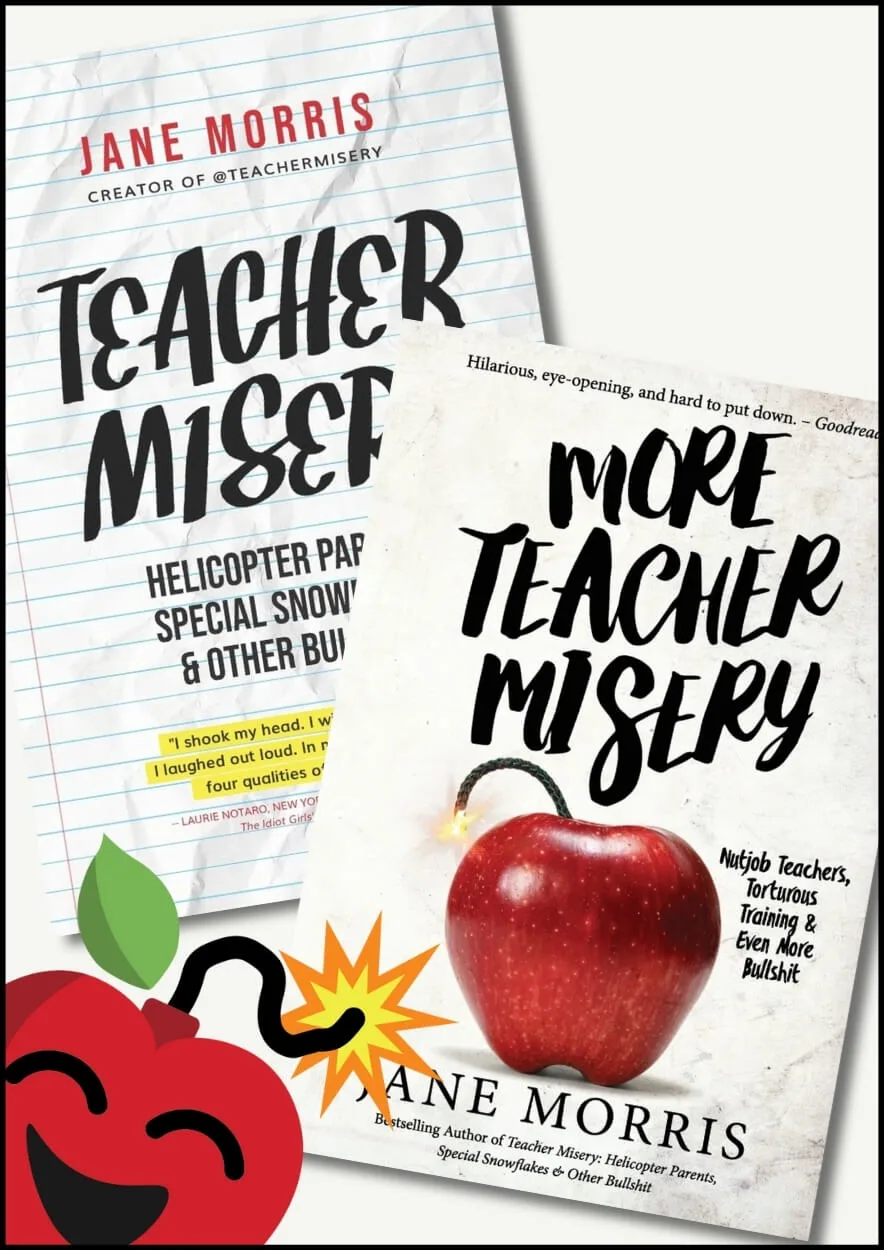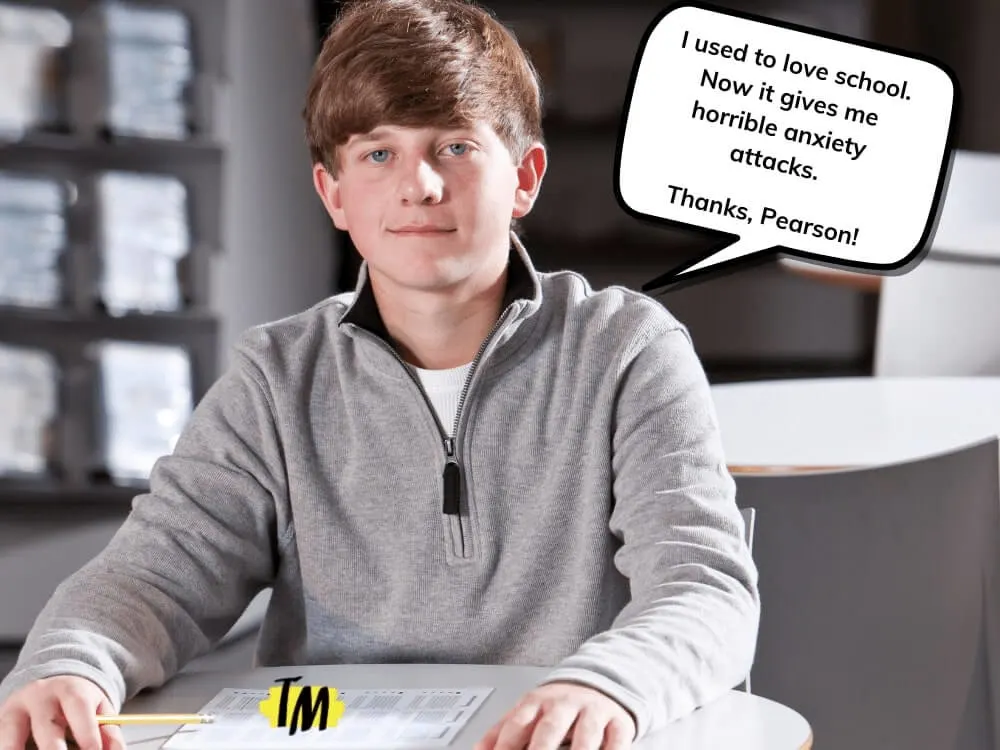The issues of Common Core State Standards (curriculum standards for the nation), and the PARCC standardized testing that is administered to check those standards, are extremely complicated. It is a matter of how far down the rabbit hole one wishes to go. I will introduce you to the essential facts of Common Core standardized testing, in case you are unaware of what this all means, and then I will share my personal experience with it as an educator.
Common Core State Standards Initiative
The Common Core State Standards Initiative is an “educational assembly” in the U.S. that specifies what K-12 students should know in English and math at the end of each grade level. According to their website, “The initiative seeks to establish consistent educational standards across the states as well as ensure that students graduating from high school are prepared to enter credit-bearing courses at two or four-year college programs or to enter the workforce.
The Common Core Standards are now the law in 46 states. The reason that most states have adopted the Common Core is not because they agree with it, but because they wish to receive competitive grants that were introduced on July 24, 2009, as an incentive for educational improvement. To qualify, states had to adopt standards and tests that are supposedly “internationally benchmarked” to prepare students for future success.
States could use their own standards and still qualify for the grants, but they were given extra points in their grant submissions if they agreed to implement the Common Core standards by August 2, 2010. We are talking about $4.35 billion in federal funds. Some states, like Massachusetts, got rid of their own effective standards and replaced them with the Common Core, to get millions in federal funds.
Do These Standards Work?
There is nothing wrong with having high standards for education, and most teachers already meet most of these standards in the classroom. But when taking a closer look at the origins of the standards there are several red flags.
According to Diane Ravitch, former U.S. Assistant Secretary of Education, “There is absolutely no evidence whatsoever that these standards will improve achievement, enrich education, and actually help to prepare young people — not for the jobs of the future, which are unknown and unknowable — but for the challenges of citizenship and life. The biggest fallacy of the Common Core standards is that they have been sold to the nation without any evidence that they will accomplish what their boosters claim.”
Who Created Common Core?
When researching the Common Core State Standards, I began to wonder who exactly created them. It is not an easy task to find the authors, but after much digging, I found a list of 135 people who created Common Core Standards.
In all, only seven of the 135 members were actual classroom teachers and no one was a K-3 classroom teacher or had any training in early childhood education. We are told that teachers helped create the standards, but that is simply not the case. Educators with actual classroom experience would be able to write standards and exams that are challenging yet developmentally appropriate. However, my concern is not really with the standards, but more with the test that was created to check that the standards are being implemented.
Get the Books That Started It All
Before the blog, the podcast, the merch store… there were the best-selling books.
If you like the content on this site, then you’ll LOVE the Teacher Misery books. They’re jam-packed with teaching insanity, ridiculous true stories, and all the commiseration about the profession you’ve come to know, adore, and respect.
Follow the links below to get your copies today!

PARCC Test
The PARCC (Partnership for Assessment of Readiness for College and Careers) test is a Common Core-aligned test designed by the for-profit company Pearson, which was paid $360 million in federal funds to write these exams.
Pearson is a multinational corporation, and the world’s largest education company and book publisher, earning more than $9 billion annually. They own nine publishing houses, including Penguin, Harcourt, Puffin, and Prentice Hall. They also own part of the University of Phoenix.
Currently, Pearson produces expensive testing materials for 18 states in the U.S. Their contract in Texas alone is worth $500 million. They own the General Education Development tests (GED), the edTPA, and the NES, a required teacher licensure tests that people pay over $100 to take. They also own the Quotient, a test for ADHD in students; the test for National Board Certification of teachers; the SAT-10, a test that measures reading and writing skills for grades K-2; and SuccessMaker, a digital learning curriculum that teachers have been forced to use in grades K-8.
Pearson owns an online for-profit charter school called Connections Academy too. Obviously, if a student uses Pearson texts and curriculum they will perform higher on Pearson’s standardized tests. It’s no wonder that Pearson was a major supporter of the creation of the Common Core Standards.
It’s All About the Money
Another way that Pearson rakes in the cash is by including product placements in their tests. In a 2013 English assessment, a reading selection included “root beer which was referred to at one point as Mug (™) Root Beer. It was followed by a footnote, which informed test-takers that Mug (™) was a registered trademark of PepsiCo.” They have also included references to IBM (™), Lego®, FIFA®, and Mindstorms (™).
Another alarming aspect of a private company owning these tests is that they have access to student data with very little oversight. Pearson may sell personal data related to individual children who have taken the PARCC. They cannot guarantee the security of this private student data and have never made clear precisely how they will use it.

Closing the Achievement Gap
So far there is absolutely no proof that the Common Core standards, Common Core curriculum, and Common Core standardized testing, will in any way close what is referred to as the “achievement gap.”
The achievement gap refers to the difference in achievement (including test scores, graduation rates, and college enrollment) between lower income and higher income students. The gap is present in all nations around the world.
Currently, hundreds of millions of tax dollars are going to corporations for the creation of curriculum and tests as well as the technology used to implement the test, all under the guise of closing the achievement gap. But this ignores so many of the significant issues that are the cause of the achievement gap, such as poverty.
The amount of homeless children in Colorado alone, a state which originally adopted the PARCC test, has more than tripled in the last decade. Imagine what that money could do for those children. It could even simply provide them with a nourishing breakfast every morning. Obviously, if a student is well-fed, they will perform better in school. Children who have quality nutrition, healthcare, as well as access to books and all the other resources provided to children in particular zip codes have done quite well on standardized tests in the past. Yet, we continue to ignore this fact and waste tax money on tons of testing materials that will eventually get dumped into the trash.
Better Use of Standardized Testing Funds
In order to pay for the creation of these assessments and the technology and materials they require, we disregard critical resources such as new books, smaller class sizes, librarians, nurses, counselors, and much more. In my own district, I have seen this huge waste of money firsthand on standardized testing.
Just a few years ago, millions were spent for the mere purpose of taking the PARCC test, a test that almost every state in the U.S. ended up dropping within 5 years. Yet at the same time we are told that there is a budget crisis and, once again, teachers are warned of frozen salaries and higher rates for health insurance.
Due to budget cuts, there are already much larger class sizes and fewer guidance counselors, social workers, teachers’ assistants, librarians, psychologists, social workers, special education teachers, reading specialists, and security guards.
Another aspect of our school that suffers due to budget cuts is funding for the arts, physical education, foreign language programs, and other subjects that are essential for the well-being and well-rounded education that our students deserve. As more money is provided for standardized testing, less money is available for the vital programs and services that all schools should provide.
15-year-old Professors of Classical Roman Literature
Besides the sheer waste of tax dollars, there’s the problem of the impossibility of the tests themselves.
The Nathan Hale Senate – a body, made up of teachers, administrators, parents, and students- voted unanimously that the PARCC test was inappropriate for the age groups it tests. It is basically public knowledge that students will perform poorly on this test. Yet according to the No Child Left Behind Act and other school reform processes, standardized test scores like these are used to fire teachers, reduce their pay, hold students back, and close down schools.
Just to give you a general idea of how impossible the tests are, here is a breakdown of the reading levels required to understand the passages on the test.
- The Lexile number for proficient readers in 4th grade is around 800. Yet the passages on the PARCC for 4th graders are at a level of 1100, which is the average level of an 8th grader.
- The average 11th grader reads at a 1250 Lexile range. Yet the reading selections on the 11th grade PARCC go all the way to a Lexile level of 1470.
To give you a more worldly application, reading a driver’s manual requires a 1220, for a nurse to perform his or her job it’s 1310, and for a scientist, the level is 1450!
PARCC Testing Not Age Appropriate
Allow me to give you an even clearer picture of how the PARCC reading selections and essay prompts are inappropriate.
- Third graders are asked to write an essay on how a character’s words and actions are important to the plot of the story.
- Fourth graders must analyze the structural elements of a Maya Angelou poem.
- Sixth graders write an essay that identifies a similar theme in two complex texts and compare and contrast the approaches each text uses to develop that theme.
- Seventh graders read and analyze a passage from The Count of Monte Cristo written in 1844
- The ninth grade test includes an excerpt from Bleak House, a Dickens novel that is usually taught in college
- Tenth graders are asked how Ovid structures lines in his poem “Metamorphosis” to add meaning to the events of the poem.
- If you are reading this, you are probably as smart as the average 10th grader. See if you can answer this question about this excerpt from a 2,000-year-old epic poem:
“But while he labored a pert partridge near, observed him from the covert of an oak, and whistled his unnatural delight. Know you the cause? ‘Twas then a single bird, the first one of its kind. ‘Twas never seen before the sister of Daedalus had brought him Perdix, her dear son, to be his pupil. And as the years went by the gifted youth began to rival his instructor’s art. He took the jagged backbone of a fish, and with it as a model made a saw, with sharp teeth fashioned from a strip of iron. And he was first to make two arms of iron, smooth hinged upon the center, so that one would make a pivot while the other, turned, described a circle. Wherefore Daedalus enraged and envious, sought to slay the youth and cast him headlong from Minerva’s fane,— then spread the rumor of an accident. But Pallas, goddess of ingenious men, saving the pupil changed him to a bird, and in the middle of the air he flew on feathered wings; and so his active mind— and vigor of his genius were absorbed into his wings and feet; although the name of Perdix was retained. The Partridge hides in shaded places by the leafy trees its nested eggs among the bush’s twigs; nor does it seek to rise in lofty flight, for it is mindful of its former fall.”
How does the poet structure these lines to add meaning to the events of the poem?
- He includes a flashback of the story of Perdix to show that Daedalus wanted to kill Perdix, and now Perdix enjoys a kind of revenge by seeing Daedalus mourning the death of his son.
- He includes a flashback of the story of Perdix to show that Perdix now lives in the shade but Icarus died trying to reach the sun.
- He includes a prediction that foretells that Daedalus will soon have to bury Perdix as well as his own son.
- He includes a prediction that foretells that Perdix will be fated to live an obscure life when he should have been a famous inventor.
I have several advanced degrees in English and I’m only 85% sure the answer is A. So, how’d you do? Now try writing a literary analysis about the poem. Go on. Try it. This is what the PARCC is expecting 10th graders to do!

Damn Those Teachers and Their ‘93 Nissan Sentras!
According to a report issued by Pearson entitled, “Preparing for a Renaissance in Assessment” our current standardized testing isn’t good enough though Pearson actually wrote many of them.
The report notes that “without a systematic, data-driven approach to instruction, teaching remains an imprecise and somewhat idiosyncratic process that is too dependent on the personal intuition and competence of individual teachers.”
How do they plan on fixing the problem of imprecise and incompetent teachers? Replacing them with computers! The PARCC uses computer algorithms to robo-grade student essays. The report states as a fact that the PARCC consortium will use automated essay scoring.
Speaking of the general put-down of teachers, Pearson’s chief education advisors and authors of the PARCC Peter Hill and Sir Michael Barber (two men who have never taught in an actual classroom for even one day) also argue that the discipline of teaching must progress into a more closely controlled profession which will make it much harder to become a teacher and much easier to fire one too.
This would require eliminating the practice of “teaching as a largely under-qualified and trained, heavily unionized, bureaucratically controlled ‘semi-profession’ lacking a framework and a common language.” Pearson’s answer to the problem of teachers in general is to basically have all educational decisions made by their software and their system. Teachers will just be needed as a sort of supervisor or babysitter.
Standardized Tests are Beating the Dead Horse to a Bloody Pulp
Whether or not you believe in standardized testing, you have to agree that our students are extremely overtested. Merely to take the PARCC exams, grades 3-8 spend 10 hours testing. For high schoolers, it takes more than 11 hours. On top of that, high schoolers have to take a quarterly district exam, a midterm, a final, and several AP tests. Also, 10th graders take the PSAT and 11th and 12th graders take the SAT. The more ambitious students also take several SAT subject tests.
Basically, the average high school student will spend between 20 and 30 school hours taking standardized tests. That is a lot of valuable instruction time that is wasted. Plus, it is just too much stress for a kid!
According to education researcher Gregory J. Cizek, there is much research “illustrating how testing produces gripping anxiety in even the brightest students and makes young children vomit or cry, or both.” In fact, vomiting during the test is so common that some tests come with instructions for the examiner on what to do with a test booklet if a student barfs on it.
In my classroom, the PARCC has made most students feel stressed out and inadequate. Even the highest achieving students find the tests exhausting and irrelevant. But for the struggling readers and writers in my classes, the consequences of these tests are much more serious.
Many of my students read and write at a level that is many grades below where they should be. Several of my 10th graders read at a 3rd or 4th-grade reading level, for various reasons. The test is absolutely impossible for them. Most don’t even try, which is a typical response to being made to feel dumb. The ones that do try are extremely anxious and confused. They have a million questions though I cannot answer any of them.
This test is sending them the message that college is not an option for them, which is not true. The experience is the same for many special education students. They get almost none of their testing accommodations during the test and it severely impacts their performance.
Buy Some Merch · Support the Site!
Teacher Misery is by the teachers and for the teachers. Our mission to improve the lives of teachers everywhere.
If you’d like to support the cause, buy yourself (or the burnt-out educator in your life) a gift from our merch store. And, YES, they are all as sarcastic as you’d hope. 😉
Every dollar supports the commiseration!

Ready to Kick Standardized Testing to the Curb?
Now that you know what a load of crap the Common Core standardized testing is, feel free to go outside and throw things. Or you could join one of the many anti-testing movements that are rapidly growing.
You also have the right to opt your children out of any and all state standardized testing. FairTest.org has guides for all fifty states.
Do not let the school administration scare you into taking tests! They may say that if you opt out the school will lose funding, it will harm the performance evaluation of your child’s teacher and your child will be kept back or punished. Most of these are empty threats, and legally they cannot do any of this.
Many teachers have tried to support the opt-out movement by informing parents and students of their right to opt out and some have even refused to administer the test. Many face disciplinary action and possible termination. The power truly lies in the hands of the people on this one. Know your rights, and please share this article with others and leave your opinions in the comments below or in our Vent Forum.


Ursa Worlds
Monday 16th of December 2024
I KNEW IT WAS ALL ABOUT THE MONEY!